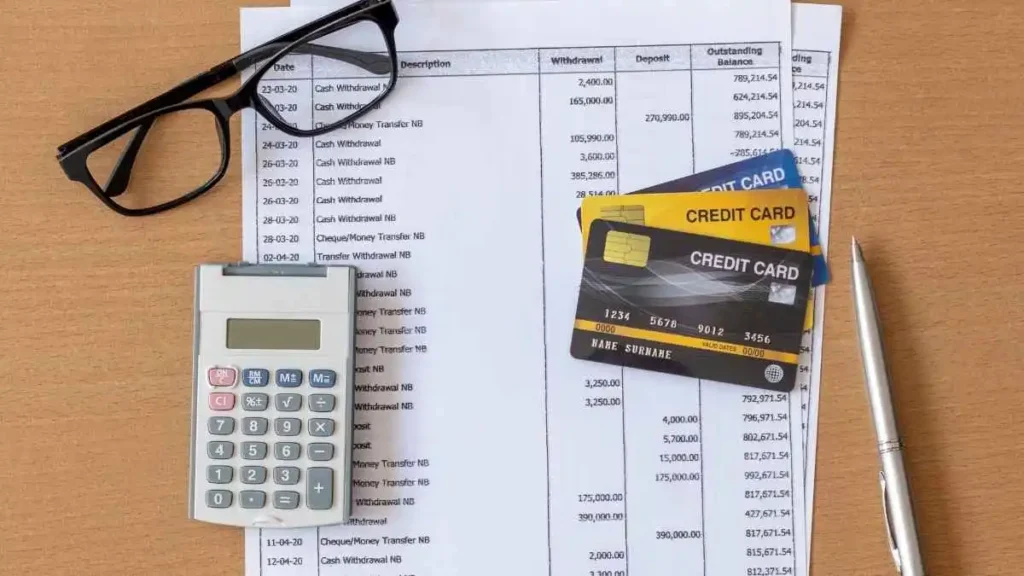
If you’re a student, young adult, or new to credit, you might be wondering, what type of account is a credit card? It’s a great question! A credit card isn’t like your checking or savings account—it’s a unique tool that lets you borrow money to spend and pay it back later. Understanding what type of account a credit card is can help you use it wisely, avoid debt, and build a strong financial foundation. In this guide, we’ll break it down in simple terms, so you feel confident managing your credit card account type.
What Type of Account Is a Credit Card?
A Credit Card Is a Revolving Credit Account
So, what type of account is a credit card? It’s called a revolving credit account. Unlike a checking or savings account where you deposit and withdraw your own money, a credit card lets you borrow money from a bank or credit card issuer up to a specific limit. You spend first, then repay what you borrowed, usually on a monthly basis.
Here’s how it works:
- When you get a credit card, the issuer gives you a credit limit—the maximum amount you can borrow (say, $1,000).
- You can spend up to that limit, but you don’t have to pay it all back at once.
- As you repay, the amount you’ve paid becomes available to borrow again.
This is different from a checking account (where you spend your own money) or a savings account (where you store money). A credit card account type is all about borrowing and repaying, which makes it a powerful but tricky tool if you’re not careful.
Understanding Revolving Credit Accounts
What Is Revolving Credit?
A revolving credit account means you can borrow, repay, and borrow again without applying for a new loan each time. Think of it like a reusable water bottle—you use some, refill it, and use it again. With a credit card, the “refill” happens when you pay back what you borrowed.
Here’s what makes revolving credit special:
- Flexible spending: You can spend any amount up to your credit limit.
- Monthly payments: Each month, you get a bill with a minimum payment due. You can pay the full balance or just the minimum (but paying only the minimum means you’ll owe interest on the rest).
- Interest on unpaid balances: If you don’t pay the full balance, the remaining amount carries over to the next month, and you’ll be charged interest (often 15–25% annually).
This flexibility is why credit cards are so popular but also why they can lead to debt if mismanaged.
How It Differs from Installment Credit
To understand what type of account is a credit card, it helps to compare it to installment credit, another common type of borrowing. Installment credit is a fixed loan you repay in equal payments over time, like an auto loan or student loan. For example:
- Installment credit: You borrow $10,000 for a car, repay $200 monthly for 5 years, and once it’s paid off, the account closes.
- Revolving credit: With a credit card, you borrow $500, repay $200, and can borrow again up to your limit without reapplying.
Other revolving accounts include lines of credit (like a home equity line of credit), but credit cards are the most common type. Knowing the difference helps you understand why a credit card vs checking account comparison doesn’t make sense—they serve totally different purposes.
Other Characteristics of a Credit Card Account
Here are some key features of a credit card account type to help you understand it better:
- Unsecured account: A credit card is an unsecured credit account, meaning you don’t need to put up collateral (like a house or car) to get one. The issuer trusts you to repay based on your creditworthiness.
- Issued by financial institutions: Banks, credit unions, or card networks (like Visa or Mastercard) provide credit cards.
- Reported to credit bureaus: Your credit card activity (payments, balances, and limits) is shared with credit bureaus like Experian, Equifax, and TransUnion.
- Affects your credit score: How you use your credit card impacts your credit score. For example, paying on time boosts your score, while high balances or late payments can hurt it.
Understanding these traits helps you see why a credit card isn’t just a payment tool—it’s a financial responsibility that shapes your credit history.
Why It Matters to Know Your Account Type
Knowing what type of account is a credit card isn’t just trivia—it’s practical! Here’s why it matters:
- Budgeting and credit planning: Understanding that a credit card is a revolving credit account helps you plan your spending and repayments to avoid high interest or debt.
- Credit score strategy: Your credit card use affects your credit score, especially your credit utilization (how much of your limit you use). Keeping it low (under 30%) is a smart move.
- Financial applications: When applying for loans, mortgages, or even apartments, lenders look at your credit card history to see how you manage revolving credit.
- Tax and debt management: Credit card debt is considered a liability (something you owe), not an asset (something you own). This distinction is important for taxes or financial planning.
By knowing your credit card account type, you can make smarter choices and avoid common pitfalls.
Real-Life Example: How Credit Cards Work as Revolving Accounts
Let’s say you’re a college student with a new credit card that has a $1,000 credit limit. Here’s how it might play out:
- You spend $400 on textbooks and groceries. Your balance is now $400, and you have $600 left to borrow.
- At the end of the month, you pay $300 toward the balance. Now, your balance is $100, and your available credit jumps back to $900.
- The next month, you spend another $200. Your balance is now $300 ($100 leftover + $200 new spending).
- This cycle continues—your balance “revolves” as you spend and repay.
This flexibility is great for small expenses, but if you only pay the minimum, interest adds up fast. Always aim to pay the full balance to avoid extra costs.
FAQs About Credit Card Account Types
Is a Credit Card Considered a Bank Account?
No, a credit card is not a bank account. A bank account (like checking or savings) holds your money for spending or saving. A credit card is a revolving credit account where you borrow money and repay it later. The confusion often comes from credit cards being issued by banks, but they function very differently from a credit card vs checking account.
Is a Credit Card a Liability or an Asset?
A credit card is a liability because it represents money you owe to the card issuer. It’s not an asset (something that adds value, like savings or property). However, using a credit card wisely can help build your credit score, which is a financial asset in the long run.
What Is the Difference Between a Credit Card and a Line of Credit?
Both are revolving credit accounts, but they differ in use. A credit card is for everyday purchases and comes with a preset limit and card for easy spending. A line of credit (like a HELOC) is often for larger expenses, accessed via checks or transfers, and may have different terms or interest rates.
Read Also- Credit Card Fraud Types
Conclusion
In summary, what type of account is a credit card? It’s a revolving credit account, not a bank account or a traditional loan. You borrow up to a limit, repay what you owe, and borrow again as needed. Understanding this helps you use credit cards responsibly, avoid high-interest debt, and build a strong credit score. Whether you’re a student or new to credit, treat your credit card like a tool: use it wisely, pay on time, and keep your balance low. With these habits, you’ll set yourself up for a bright financial future!

Emma Rose is a U.S.-based personal finance writer and a regular contributor at Cardix.us. She focuses on topics like credit cards, credit scores, and everyday money management. Emma’s writing makes complex financial concepts simple and practical, helping readers make smarter credit and spending decisions with confidence.

